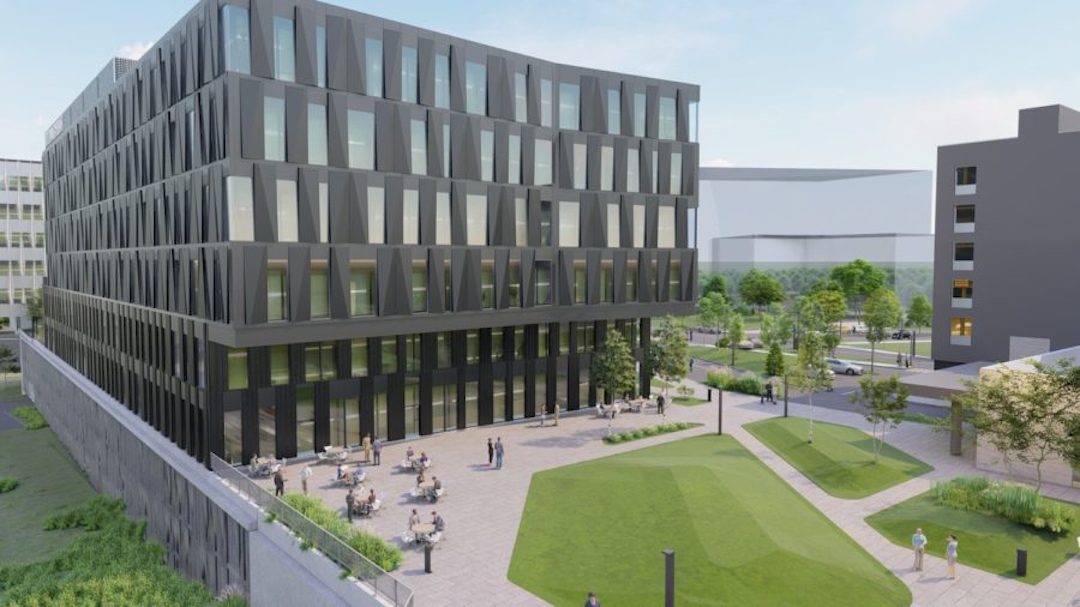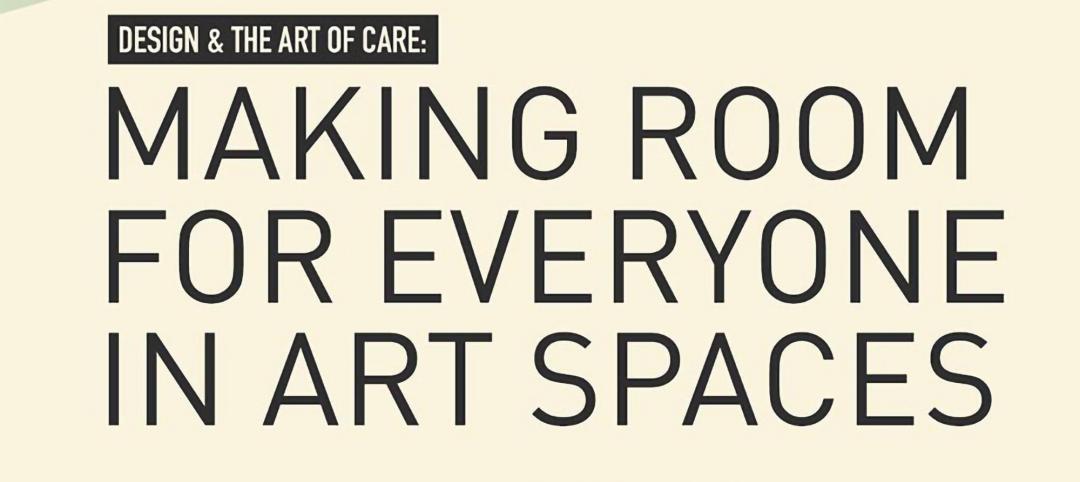The last decade has seen the emergence of what researchers at the Brookings Institute call a new “geography of innovation.” Once sequestered in the suburbs on corporate research campuses, the most innovative companies and entrepreneurs are finding their way back to more dense urban areas – and into innovation districts.
Not only a geographical designation, but a complex partnership, investment, and city planning strategy, “innovation districts,” according to Bruce Katz and Julie Wagner, “are geographic areas where leading-edge anchor institutions and companies cluster and connect with start-ups, business incubators and accelerators. They are also physically compact, transit-accessible, and technically-wired and offer mixed-use housing, office, and retail.”
This type of development isn’t just about innovation or lab space; and it’s not just universities or research institutions that are driving this change. Rather, innovation districts constitute a form of development that brings public and private research institutions (universities, hospitals, government institutes) together with cutting edge businesses, startups, developers, and state and local leaders, to invest in and reshape our cities. The factory jobs that had historically defined the economic life of our Midwestern cities have been gone for a generation. Innovation districts point the way forward, not only in terms of generating solutions of our most pressing problems but also in terms of fostering the growth of sustainable jobs.

Responding, in part, to the desire of highly sought-after research talent for a more balanced, integrated life, innovation districts look beyond the office (and beyond the lab) to entice researchers with complete neighborhoods – places where you can live and work, catch a show, haunt a local coffee shop, and relax in a park. There are, of course, numerous other benefits, not only for workers, but for each of the institutions and actors involved in their development. Universities find increased access to capital for new projects while developers find reliable, long-term tenants; businesses access top researchers while students and researchers benefit from their practical experience. Also, if done well, innovation districts can be a benefit to their neighborhoods by offering new resources (co-working spaces, meeting spaces, and other amenities) while helping to advance career paths to current residents.
The First Ten Years: A Decade of Innovation Districts…
Their roots go back further, but innovation districts really began to attract attention as a joint development and growth strategy for research institutions, businesses, and their regions during the recovery from the 2008-2009 recession.
At the time, there were a handful of well-established examples that city planners, universities, and developers looked to in an effort to replicate their success. These are well-described in the 2014 Brookings Institute report, The Rise of Innovation Districts, which points to the models offered by Kendall Square (around MIT and Massachusetts General Hospital in Cambridge), the Cortex District in St. Louis (anchored by Washington University), Seattle’s South Lake Union area (University of Washington, Medicine, Amazon, and others), and urbanized science parks like Raleigh-Durham’s Research Triangle Park (anchored by North Carolina State University, Duke, and UNC-Chapel Hill).
Since then, however, there has been a veritable explosion of innovation districts. As much of the world transitions from an industrial to a service economy, the geography of innovation districts is displacing old, industrial corridors, both in terms of their importance and, sometimes, literally as old warehouses are repurposed to act as technology accelerators and coworking spaces. Recent estimates suggest that there are well over 100 innovation districts emerging globally, including many in small to midsized cities like Pittsburgh, Cincinnati, Dayton, Cleveland, Memphis, Kansas City, Providence, and Chattanooga.

In Cincinnati, GBBN is working on multiple projects, including new construction at the Digital Futures Complex and the creative reuse of 121 E. McMillan, as part of the Cincinnati Innovation District (anchored by University of Cincinnati, UC Health, and Cincinnati Children’s Hospital Medical Center). We’re also just wrapping up a project in Pittsburgh that adapted an old steel mill’s 10-bay roundhouse for use as a coworking space for technology accelerator OneValley. It’s part of a larger effort to transform the sprawling grounds of the shuttered J & L Steel Mill into an innovation hub and a model for sustainable development. With all of these projects, we are intentionally looking beyond the walls of the building to ensure that they are contributing to the larger neighborhood and innovation ecosystem.
It’s exciting to see the kind of energy and investment innovation districts bring about. They offer a real opportunity to improve life in our cities – big and small – not just for knowledge workers, but for everyone. However, the thinking about innovation districts hasn’t really caught up with the reality of their growing popularity as a strategy for growth.
How should the strategy behind innovation districts change in an increasingly crowded field with actors of such varied sizes? This article is the first installment in a series in which we will explore how the model for understanding and strategizing around innovation districts should change to meet this new reality.
More from Author
GBBN | Sep 12, 2024
How space supports programming changes at university libraries
GBBN Associate Sarah Kusuma Rubritz, AIA, uses the University of Pittsburgh's Hillman Library to showcase how libraries are transforming to support students’ needs.
GBBN | Jul 3, 2024
New science, old buildings: Renovating for efficiency, flexibility, and connection
What does the research space of the future look like? And can it be housed in older buildings—or does it require new construction?
GBBN | Jun 3, 2024
Insights for working well in a hybrid world
GBBN Principal and Interior Designer Beth Latto, NCIDQ, LEED AP, ID+C, WELL AP, share a few takeaways, insights, and lessons learned from a recent Post Occupancy Evaluation of the firm's Cincinnati, Ohio, office.
GBBN | Feb 26, 2024
GBBN's Inflation Reduction Act Calculator goes live
GBBN has publicly released its IRA Calculator, a tool that helps you understand funding opportunities in the IRA for sustainable design.
GBBN | Jan 25, 2024
Tactical issues for renovating university research buildings
Matthew Plecity, AIA, ASLA, Principal, GBBN, highlights the connection between the built environment and laboratory research, and weighs the benefits of renovation vs. new construction.
GBBN | Dec 14, 2023
What's next for affordable housing in 2024?
As 2023 draws to a close, GBBN’s Mary Jo Minerich and Amanda Markovic, AIA sat down to talk about the future. What’s next in terms of trends, technology, and construction of affordable housing?
GBBN | Oct 11, 2023
Leveraging land and light to enhance patient care
GBBN interior designer Kristin Greeley shares insights from the firm's latest project: a cancer center in Santa Fe, N.M.
GBBN | Aug 31, 2023
Small town takes over big box
GBBN associate Claire Shafer, AIA, breaks down the firm's recreational adaptive reuse project for a small Indiana town.
GBBN | Jun 20, 2023
Designing arts spaces that curate inclusivity
GBBN's Julia Clements and Marcene Kinney, AIA, LEED AP, talk tips for designing inclusive arts spaces.
GBBN | Mar 22, 2023
Onsite prefabrication for healthcare construction: It's more than a process, it's a partnership
Prefabrication can help project teams navigate an uncertain market. GBBN's Mickey LeRoy, AIA, ACHA, LEED AP, explains the difference between onsite and offsite prefabrication methods for healthcare construction projects.
















